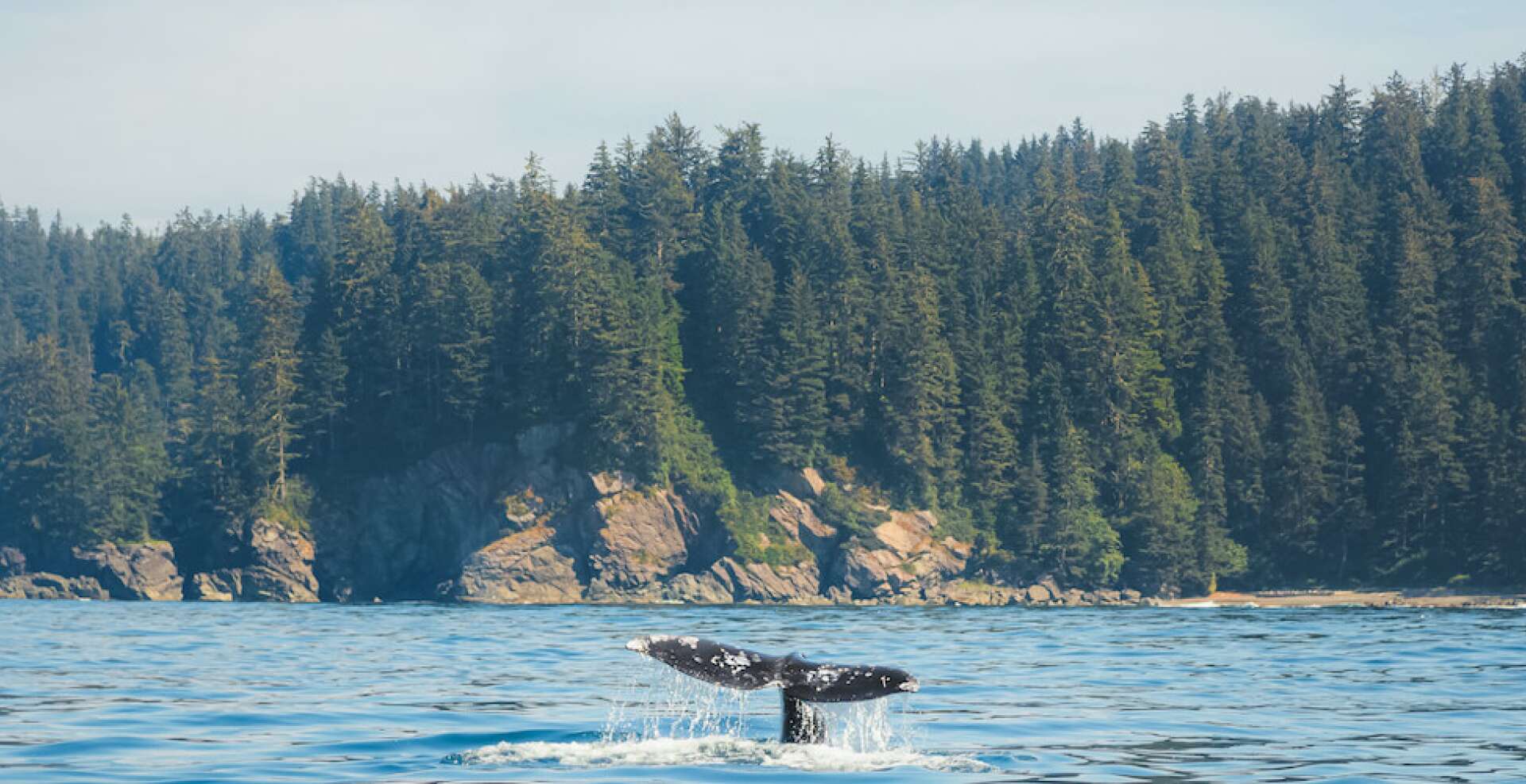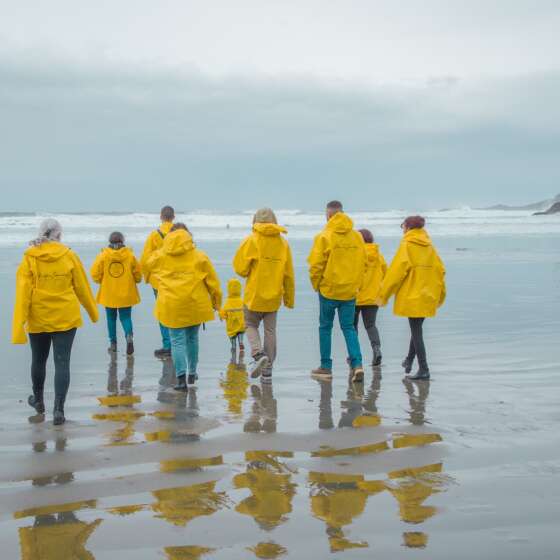Tofino Whale Watching Guide
In Tofino, March is about more than the arrival of spring. It’s about the arrival of whales. Lots of them, including over 20,000 Grey whales migrating north to the Arctic, and soon, 6,000 Humpback whales on their annual pilgrimage. In fact, every year from March through October, it is like one big blowhole commute making Tofino one of the best places in the world to experience Whale Watching.
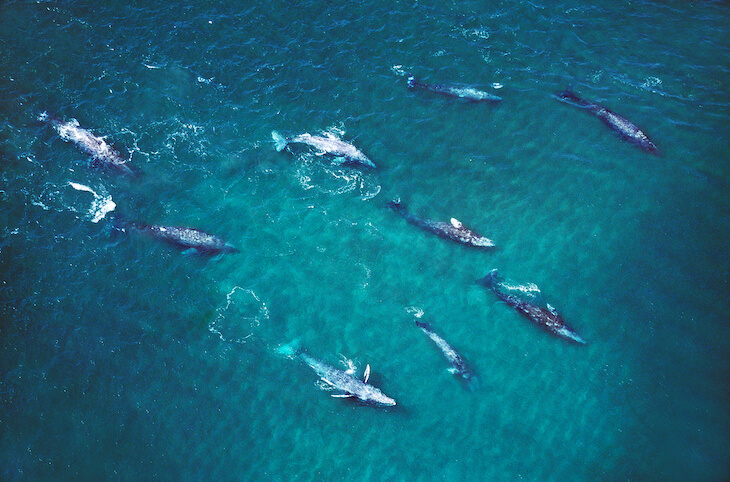
Migration Marathon
The undefeated, marathon swimmers of the whale world are Grey whales, making an annual, round-trip migration of up to 22,530 kilometres (14,000 miles) from the winter birthing waters of the Baja Peninsula in Mexico to the summer feeding grounds in the Bering and Chukchi Seas—the longest migration of any animal. An estimated 20,000 Grey whales start swimming past Tofino and Clayoquot Sound as early as February, and except for about 200 that stick around and feed in our waters for the summer, the majority reach the Arctic by June, then turn around and head south in September.
May through September is when an estimated 6,000 Humpback whales make their spectacular entrance. These Humpbacks are part of the Central America population, breeding along the Pacific coast of Central America—including Costa Rica, Panama, Guatemala, El Salvador, Honduras, and Nicaragua—then feeding off the west coast of the U.S. on their way past Tofino to Alaska. It’s about an 18,000 kilometre loop (11,000 miles), although some opt to head west from Alaska to a group of islands east of Japan for their summer layover, while another group makes the 6-8 week crossing to Hawaii.
Grey whale or Humpback whale?
When whale-spotting around Tofino, distinguishing Grey whales from Humpback whales can sometimes be tricky. Here are the key differences that will make you a pro:
- Grey whales have short flippers and no dorsal fin; only a small hump on their spine and a series of 6 to 12 bumps called “knuckles.” If you’re Whale Watching in shallower water and a whale approaches your boat, chances are it’s a Grey whale as they’re the more social of the two species.
- Humpbacks have a small dorsal fin and long flippers. If you’re lucky enough to see a whale slap its tale or leap out of the water (called breaching), chances are it’s a Humpback as they’re known for showing off in spectacular style. Also, as you’ll learn below, Humpbacks have quite the singing voice.
- Humpbacks are longer at up to 19 metres (62 feet)—about the length of a bowling lane—compared to Grey whales at up to 15 metres (49 feet) long, which is similar to a semitrailer.
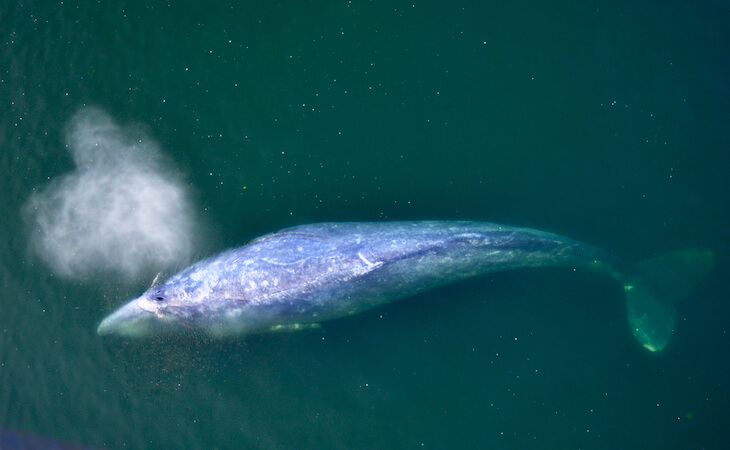
Fun Facts: Grey Whales
- Giant vacuums – Grey whales are ‘baleen’ whales, which means instead of teeth, they filter their food through baleen plates that hang down from the roof of their mouth. As bottom feeders that hunt the seabed sucking in small creatures, they stay submerged for up to 15 minutes at a time and eat about 1,300 kilograms (1.3 tonnes) daily.
- Lopsided – Most Grey whales turn on their right side to feed, and as a result, their right flipper is typically shorter and the right side of their head is more scarred from rooting around on the bottom of the ocean.
- Fertility focussed – Female Grey whales have a 12 to 13-month gestation period; giving birth to a single calf about every 2 years. A calf feeds on its mother’s milk which is 53% fat, compared to human milk at only 2%.
- Friendly – Grey whales are very curious and like to play with humans, often approaching boats for a closer look. Speaking of which, a Grey whale’s eyes are about the size of baseballs; located about 2.5 metres (8 feet) from the tip of their jaw.
- Carrying a heavy load – The white blotches you see around a Grey whale’s head, tail, and flippers are barnacles that grow in clusters. In fact, Grey whales are known to carry around 181 kilograms (400 pounds) of barnacles!
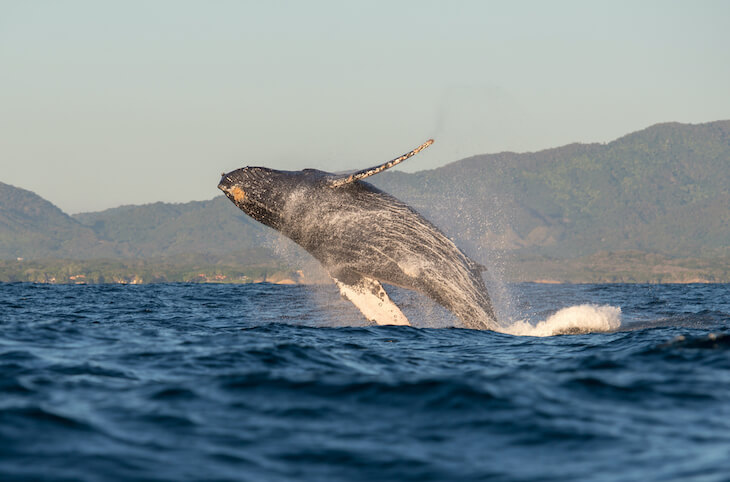
Fun Facts: Humpback Whales
- Built to last – Humpback whales can live for 80 to 90 years.
- Well travelled – They live in all of the world’s major oceans, typically spending summers feeding in cooler waters then winter mating/calving in warmer tropical waters. The only exception is the Arabian Sea where they live year round.
- Dedicated moms – Humpback females produce a single calf every 2 to 3 years. Calves are born after an 11-month gestation period and measure 4 to 5 metres (13 to 16 feet) long.
- Smart hunters – Humpbacks are also baleen whales, but what makes them very unique is the ingenious way they trap fish as a group. Called ‘bubble netting,’ these whales dive below a school of fish, encircle then spiral upwards while blowing air bubbles to disorient the fish and send them toward the surface in a tight ball. The whales then quickly swim up from below and take a big gulp.
- Entertainers – Besides their crowd-pleasing breaching and tail slapping, Humpback whales are known for singing, with songs often lasting 10-20 minutes. While of course, they do not have vocal cords, Humpbacks create their unique sound by forcing air through their enormous nasal cavities. Both males and females sing, however in places like Hawaii, it’s the males that are known for singing continuously for 24 hours during mating season, often with other males joining in for the chorus!
Whale Watching Savings for Pacific Sands Guests
Experience these extraordinary mammals up close on a Whale Watching tour with our friends and eco-adventure partners at Jamie’s Whaling Station. Now through October, Pacific Sands guests save $10 per person on covered vessel or zodiac tours through the majestic islands and lagoons of Clayoquot Sound.
From Grey and Humpback whale sightings to resident wildlife—including eagles, seals, sea otters, and Orca whales—every tour is a unique quest and connection with the rugged west coast.
For more information on how to get your Whale Watching discount, contact Guest Services.
